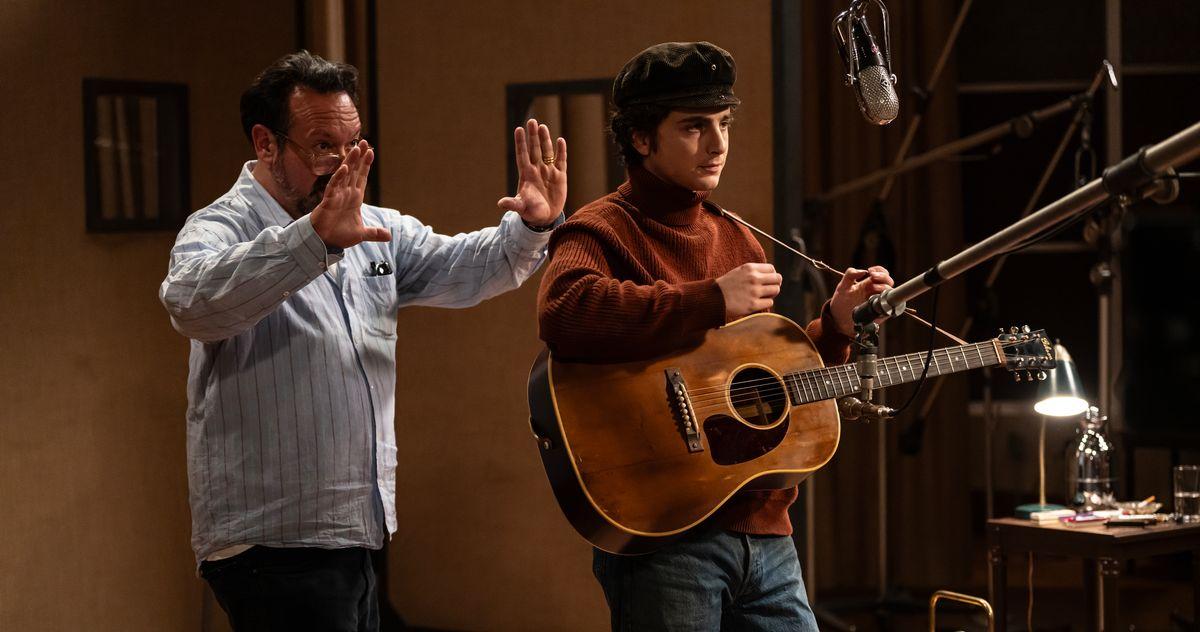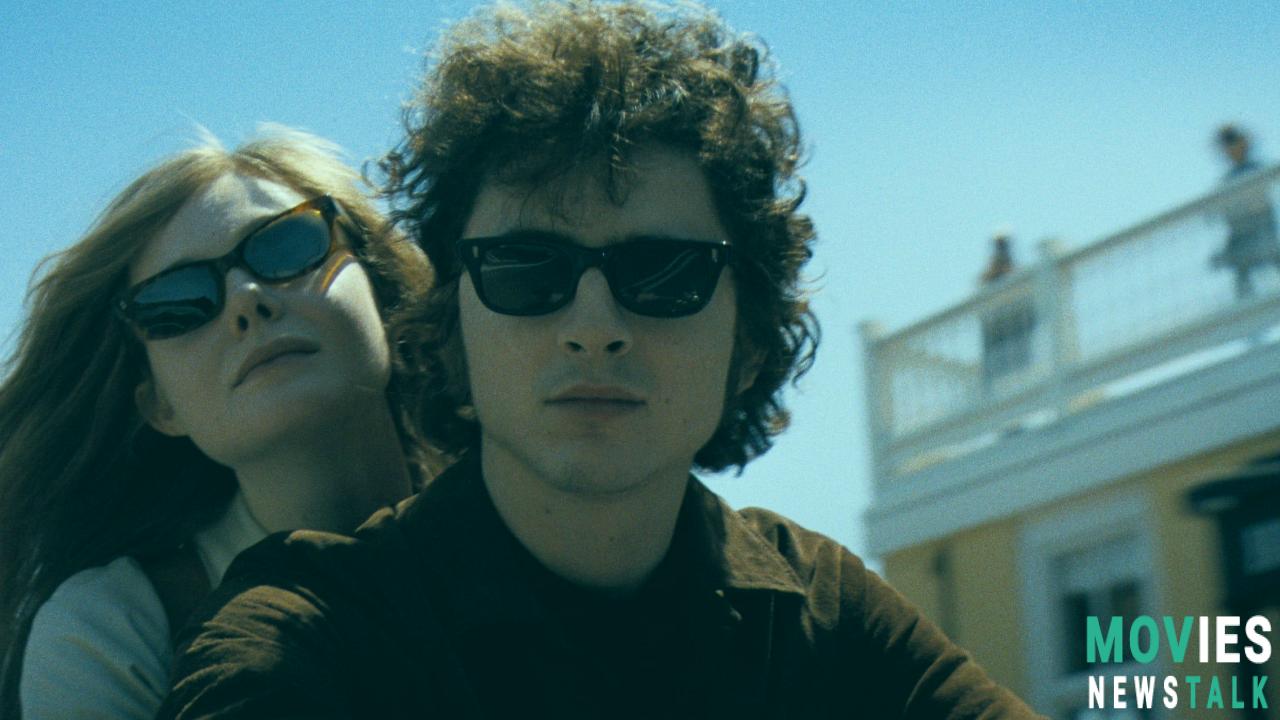James Mangold avoids being known as just one style or type of director explaining that his career versatility results from influence from 1970s movie auteurs and directors of Golden Age Hollywood. He specifically references Michael Curtiz Howard Hawks Victor Fleming all of whom have greatly influenced his work. Mangold’s career displays various films across multiple genres such as Copland psychological dramas like Girl Interrupted westerns like 3:10 to Yuma action rom-coms like Knight and Day and superhero movies like Logan and The Wolverine as well as most recent Indiana Jones sequel all demonstrating great range of skills. A Complete Unknown Mangold's second film following Walk the Line explores musical genius through the character of Bob Dylan this time.
A Complete Unknown and Walk the Line Present Distinct Yet Signature Character Driven Musical Dramas by Mangold
Mangold's Timothée Chalamet-led movie titled A Complete Unknown contrasts highly with his first foray into musician biographical narratives Walk the Line with Joaquin Phoenix though his specific style connects the movies with similar themes. A Complete Unknown meticulously captures the ambience of early 1960s Greenwich Village focusing heavily on character impact over simple recreation with particular emphasis on interpersonal dynamics within the setting. Indeed, A Complete Unknown which covers the period of time leading into the 1965 Norfolk Music Festival shows the specific way that Bob Dylan's specific brilliance changed lives of individuals such as folk icon Pete Seeger and musician Joan Baez demonstrating a complex understanding of a major figure and his effects on his time .
Newport 1965: Depicting a Cultural Shift and Personal Conflicts

James Mangold stated his own 15-year old son did not grasp the level of response Bob Dylan encountered at 1965 Newport Music Festival and how audiences felt Bob Dylan's specific changes in musical styling from his folk songs towards electric guitars and softer forms of rock. He further states that when Bob Dylan moved from Minnesota to New York he had goals outside of simply being a folk performer referencing many early influences of Buddy Holly plus Little Richard. Modern day perspectives would easily recognize these styles of music however the historical musical culture was very specific to how genres should or should not merge making this a major moment within the historical musical context. Johnny Cash performed on this very same Newport stage which did cause the very same uproar yet he was met with open arms and welcoming attitudes during that era and beyond.
Family and Emotional Stakes of The Narrative Take Center Stage above Plot Points in A Complete Unknown

James Mangold focuses character dynamics above high plot tension claiming stakes in action-packed movies such as “will the main actor survive” do not really raise the dramatic appeal for audience viewers rather character impact on one another carries more value. The central idea was to structure this movie to showcase personal effects on main charecters showcasing this era with different family relations taking central point above outside forces. The specific Newport ’65 moments are not simply an end of the world crisis moment for the characters rather it is a breakdown within families and all personal relationships making it much more effective with deep meaning.
A Complete Unknown Shift in Emphasis From Standard Protagonist Biopics
James Mangold decided to refocus this narrative on surrounding characters rather than making Bob Dylan the clear protagonist allowing a complex overview of Bob through interactions of those around him who were both influenced and affected. The structure of this movie focuses heavily on effect versus the cause or a sequence of standard life events. In using mentor Milos Forman with the structure of movie Amadeus James Mangold showcases Mozart through Salieri emphasizing impact that a genius has on others leaving in their wake both disappointment along with envy among his peers. This creative choice allows more depth to character by displaying a diverse perspective outside of a main players mindset .
Loneliness and Inspiration Examined through Character Relationships of A Complete Unknown Film
A Complete Unknown emphasizes that loneliness among others creates space for both resentment and inspiration allowing an avenue for exploring character depth by presenting personal feelings in reaction to artistic success that create strong undercurrents for conflict. James Mangold states the questions posed within the text are similar to Salieri’s internal debate: why him, why does he get this gift of musical creative talent. There's an idea that talent is something that an individual inherits while other people may be seeking. There was also a point where James Mangold felt it important that the Bob Dylan portrayal was understood as very specifically lonely even after great success which explains why so many artistic talents move towards innovation throughout their careers showing a never ending desire.
James Mangold’s Focus on Implied Emotions through Close Ups and Body Language in Movie
Mangold prefers emotional communication through character action as opposed to blatant dialogue explaining a specific belief on the importance of reading between lines. Studios often push actors to verbalize all emotions and connections that might be conveyed though action where Mangold chooses a much more subtle approach allowing audience interpretation for the more effective delivery of message. Mangold’s style aims to leave lasting character impact through personal interactions relying on actors capabilities of performing even when words become few adding layers of complexities. Mangold says moments that involve wordless interaction create intimate environments for viewers to grasp greater emotional context of movie plots. The “Blowin’ in the Wind” musical number demonstrates how characters interactions are presented using these specific methods that rely more on close-ups rather than dialogues for audience perception.
Dynamic Pairings Highlight Character Contrasts in James Mangold’s Storytelling Methods
James Mangold uses dynamic pairings of very different character backgrounds for generating conflict with specific personal requirements forming basis of relationship developments throughout. These character-driven sequences of interactions across his different movie projects demonstrate his storytelling strategies in showing character motivations plus personal drives . Even 3:10 to Yuma relies heavily on conflict between Russell Crowe and Christian Bale highlighting differing values that create tension in the setting making clear these method of interactions are essential parts of his professional style. He clearly acknowledges every element is specifically designed for each film using different personal character journeys.
Character Development Above Visual Styles: James Mangold’s Views on Effective Filmmaking
James Mangold highlights value character development to movie projects explaining visual styles are pointless without character development. Great movies use the strengths of beautiful cinematography alongside excellent actor performances according to his production styles and values he utilizes. His influences that include many classic style actors plus film directors from throughout various time periods showcase how important human moments are in conveying powerful narratives over simple scene composition or grand visual presentations of scenery. He sites directors like Antonioni and the performances of actors like Monica Vitti are excellent examples in showcasing what powerful visuals look like when done effectively as one unit.
From Screaming at Mary Poppins To an Aspiring Filmmaker during The 1970's Era
Mangold mentions his first memory at movies during childhood being at Mary Poppins movie that was so scary to him, it caused him to exit theater but the 1970’s were his main motivator to pursue filmmaking. The movie The Wizard of Oz specifically from director Victor Fleming served as main source of influence according to James Mangold in this section. Girl Interrupted became a version of The Wizard of Oz using a dream sequence that he compares to Dorothy a main protagonist of said film. James Mangold recalls 1970's experiences where his dad introduced him to many movies as formative moments. During this same era films like Taxi Driver Raiders of the Lost Ark Star Wars Sugarland Express Close Encounters Network and All the President's Men also inspired his dream to become involved within that creative industry. This influence from the 70's had great influence on character structures and scene compositions.
Early Hollywood Experiences: Creative Freedom and Frustrations with James Mangold Early Days
James Mangold initial entrance into film started with Disney when an impressive short film gained interest from studio heads providing him with a contract by age 21 as a writer and director for them. The team at Disney which included Eisner and Katzenberg and Chris Carter along with others offered young talents great environment with office space and production support . James Mangold initially proposed several film projects such as James and the Giant Peach plus Stuart Little before being assigned writing roles in animated feature film productions a field they had yet to engage with effectively during that period. James Mangold after creative disputes that Disney only wanted more familiar plots and storylines from studio films of their past had creative disputes with studios that eventually forced him to move on from original contract and initial placement with Disney corporation.
James Mangold Returns to School After Initial Setbacks and Discoveries with Writing Process
James Mangold returned to film school due to the inability to maintain creative production with existing structure initially leading to working with movie trailer narrations and even animation series for kids like Will Vinton's Claymation before he began to become very disillusioned with the film industry. After facing creative blocks trying to work with source materials like The Sportswriter he turned to personal writing efforts where also a similar feeling of creative block came to pass. In order to rediscover his creative self James Mangold choose to join Columbia University as film student as this environment helped to refocus his efforts on building his skills.
Columbia Film School Experiences: Shaping Screenwriting Techniques
James Mangold discovered the act of screenwriting as his greatest talent working through his directorial class guided by Milos Forman. Milos would give practical writing exercises focusing more on character analysis and building up back stories rather than following simple plot outlining methods that he stated as “labored dance”. Milos’ process involved the director sharing pages that would then be reviewed on following Tuesdays creating space for personal interpretations while writing his own projects. This collaboration would ultimately develop a new style of scene making using his own distinct perspectives through the character lenses and that his best storytelling technique would arise through deeper understanding of core individual actors.
From Cash Registers to Lyrics: Mangold’s Methods of Injecting Life Into Scenes
Mangold shares a memorable experience where actor Debbie Harry shows Liv Tyler how to work a basic cash register during movie Heavy that director Milos had praised demonstrating his personal connection to every character while also valuing slices of human experiences. This perspective greatly changes his entire career view in screenwriting creating space to build on character interactions beyond typical plot sequences where real life dramas can naturally surface without forced narrative pressures from studios. James Mangold claims in order to be more effective he does not tend to outline plot lines rather he uses descriptions for Bob Dylan saying ‘A guy from Minnesota creates identity leaves family friends makes new relationships then achieves major success before again abandoning this recent development" . In this situation where he presented a character’s key elements the main aspects of Bob Dylan's story surfaced which is always a process for uncovering stories and major plots through an intuitive process which takes creative value to a central point.
Recurring Themes in His Projects Including Ideas of Arrival and Departure as Recurring Symbolism
Mangold’s creative process includes structure elements such as song “So Long It’s Been Good to Know Yuh” as representation of departure and renewal showing a beginning and ending cycle for stories and projects which helps to guide narratives in all his work . He notes that Bob Dylan arrival scene that then transforms into his leaving point is how he defines character arcs throughout most of his work . This is all a way to create a visual cycle demonstrating themes in both life and all personal experiences.
Western Influences with Symbolic Character Departures and Arrivals within Many Films
Mangold suggests that even seemingly separate genres like the western might apply within Bob Dylan story where a man with guitar crosses the country recreating a mythical image in modern world with all his work . Mangold often references influences from different genres showing that genres create story building structures in similar manners ranging from western to Celtic fables demonstrating his knowledge of film theory across time . Also that Bob’s portrayal displays both the creation of mythology and his living truth simultaneously in real time through his story telling choices demonstrating self reflection within his creations. His artistic style provides insight into why themes might resurface in a variety of films while making sense with different character styles using symbolism, body language plus character to drive forward all central messages he shares with audiences.
The Dial of Destiny: Reflecting on Response and Personal Motivations for Involvement
James Mangold discusses how Indiana Jones and the Dial of Destiny tried to convey a feeling of the protagonist character aging as central aspect which in his opinion he believes can not be ignored for such an iconic series. There are many that showed extreme responses at even any presence of strong women characters something he considered completely baffling as even the original movies had notable women characters who added much to overall context. James Mangold’s involvement in the film was due to having his project for Bob Dylan shelved when COVID began along with Timmy had obligations to filming Dune forcing him to pause all film operations. At that exact point in time Mangold had phone call from Harrison Ford and Steven Spielberg asking if he might want to collaborate for Indiana Jones providing an enormous sense of joy during a time of difficulties for production on a movie project he already believed in and greatly values in film.
Steven Spielberg and Hero Collaboration During Movie Production
James Mangold believes that collaboration with heroes like Steven Spielberg might be his strong point after a successful production run with Ford V Ferrari making many others take notice. He acknowledges that Steven Spielberg along with George Lucas have diverse and incredibly high levels of versatility within their work while maintaining distinct styles of cinematography demonstrating ability to make a large range of films successfully using an underlying personal directing skill. He also explains in past reviews he is extremely critical of film continuations but in Logan movie he used different camera tones to demonstrate how change creates unique and very powerful messages by taking well-loved intellectual property to other creative levels. The audience was deeply split and it required very strong artistic vision for moving the narrative.
Creative Freedom and Divergent Perspectives
James Mangold states it is very common knowledge that a project such as Logan would not have occurred with Disney Marvels studios as creative style was much more structured and rigid unlike Fox marvel studio collaboration that allowed this level of artistic style. This demonstrates there is room to deviate from rigid structures as in doing so this creates room to be much more creative while adding a distinct edge and appeal to well known characters. These creative liberties he stated are key in conveying any meaningful narratives.
Exploring Bob Dylan’s Enigma, Through his Music with Respect to All Character Viewpoints
Mangold states that there exist many various ways to feel and express about Bob Dylan. Mangold wanted his movie to serve all those views while respecting his influence during his rise to prominence avoiding cliché representation . He states that all those that look towards Bob Dylan’s actions often take on a very serious almost pretentious view due to Dylan’s ability to express himself using poetic and elusive language however Mangold feels that doing that can often diminish his inherent talent instead making an artist look dorky and disconnected from mainstream artistic movements. Mangold believes working with a 19-year-old’s perspective will be different in presenting character motivation because he is merely exploring versus trying to manipulate public. There’s a part where Dylan is not being filled by all the adoration and respect that he receives demonstrating this unique internal struggle with his artistry and also very clearly expressing himself in this new way of performing.
Open Ended Nature of Dylan's Lyrics and Their Lasting Impact
Mangold asks: why exactly do we want more from Bob when we’ve been provided such vast catalog of artistic performances which can be viewed in movie where actors lip sing up to 26 songs highlighting the range he offered. He states the elusive way Bob offers insight through his songs allows interpretations that can connect to people rather than having an answer rather that his answers are up to his audience. James Mangold worked closely with cast to ensure voice and instrumental skills reached his goals before they filmed highlighting that Norton went far to understand Pete Seeger even reaching out to Joan Baez for direction to guide him through to effective performance levels. Joan Baez in turn helped Barbaro move towards understanding how to embody her characters in organic non mimicry performances, This entire film attempts to see a more personal and intimate look at a very talented individual while making connection between character and viewer in ways that other past productions were unable to provide. Mangold worked hard to avoid tropes of typical biopics allowing for an organic story to flow naturally and effectively while respecting original source material and influence that had shaped many people across the world during Bob Dylan's journey.

